BeachesKilmore Quay is surrounded on either side by miles of golden sandy beaches. The Little Beach beside the harbour is popular with families during the summer. The rocky shoreline from the end of the beach to Nemestown is teeming with marine life. A great place for rock pooling. Nearby Seaview and Ballyhealy are also popular during Summer and can be accessed by road from Kilmore village. It is also possible to walk along the shoreline from Kilmore Quay to Carne. On the west side of the village, the Burrow shore stretches around Ballyteige Bay as far as Cullenstown. (See below) Shore angling is a popular activity especially at nearby Rostoonstown where bass, dogfish, plaice and flounder are among the varieties caught here. Please Note: Access to some beaches can depend on tides. Please check the tides times before using the beaches. |
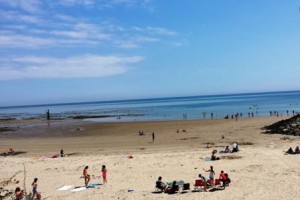 |
Ballyteige BurrowBallyteige Burrow or “The Burrow” as it is locally known, is so called because for centuries it was used for the production of rabbits. At the time Ballyteige was actually a peninsula, it only became fully joined to the mainland in the mid-1800s when drainage and land reclamation work was carried out as part of a Famine Relief scheme. It reclaimed 660 hectares of farmland from the sea and permanently joined the Burrow to the mainland. You can see the network of dams, drains and canals employed to create the polder behind the 8km of sand dunes that make up the Burrow today. |
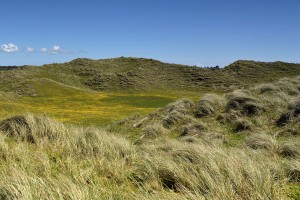  |
Ecclesiastical SitesThere are some quite interesting ecclesiastical sites in the area. St Peter’s Church, built in 1875 to save locals and visitors the three mile walk to the parish church in Kilmore, is a landmark within the village. Nearby Grange graveyard is believed to be one of the oldest graveyards in Ireland. There is a unique tradition of placing funeral crosses at a particular place along the roadside on the way to the graveyard. In Tomhaggard there is a penal church and also a mass rock where early mass is today celebrated annually on Christmas morning in remembrance of those times. |
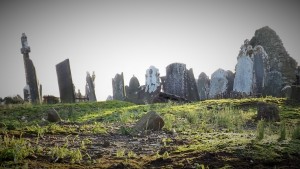 |
Forlorn PointThis little outcrop of rock is amongst the oldest rock in Ireland and because about 35 hectares of them are exposed, it is an ideal place to see them. They consist of three kinds of gneiss (pronounced ‘nice’) which were formed at least 620 million years ago during the Precambrian Period. At low tide Forlorn Point has excellent rock pools. Exploring them is an ideal introduction to marine life for both adults and children. You can observe the private lives of sea anemones, crabs, shrimps, winkles, limpets and other shellfish. |
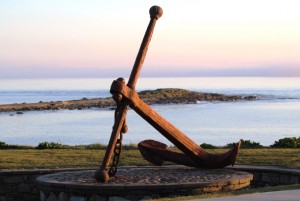 |
PlaygroundThe award-winning “Shipwreck Cove” playground at the back of the pier beside the main car park has plenty to keep the children active. Overlooking the Saltee Islands, there are also some picnic benches and a seating area to enjoy a picnic or just take in the view. |
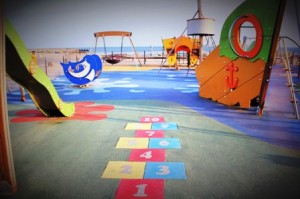 |
Memorial Garden & GroundsSituated in an area overlooking a stretch of sea that is aptly named, “the graveyard of a thousand ships”, the garden is a memorial where people can grieve for their loved ones lost at sea in a manner which brings resolution and healing and be a journey of hope for the living. The garden in the shape of a mooring bollard contains a stone ship, with a compass fountain incorporating a propeller blade from the SS Lennox, lost off the Saltee Islands in 1916. The trail from the ship leads down to the Vigil sculpture of the two grieving figures looking out to sea. An annual memorial service is held at the Garden in June. Though a sombre subject, the Garden is a beautiful peaceful place with a splendid vista. To get there, follow the promenade from the harbour car park, past Forlorn Point, heading toward Ballyteige Burrow. |
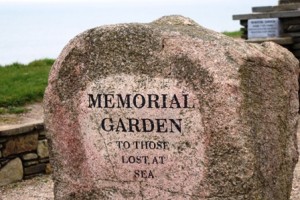 |
Nemestown & St Patrick’s BridgeThe strange spit of shingle and rock jutting out to east of the harbour at low tide is called Saint Patrick’s Bridge. It is believed to be a moraine, marking a temporary advance during the retreat of the great ice sheet that swept down what is now the Irish Sea during the last Ice Age. The ice deposited the glacial erratics it was carrying on the Bridge and to the east of it. Erratics are very uncommon to the west. Erratics are very large boulders that have been moved by the power of the ice and are usually of a rock type that is not found locally. Many of the larger erratics here have names. The big drum-shaped one immediately east of the Bridge is Saint Patrick’s Rock. |
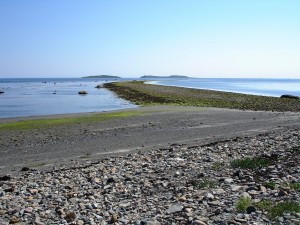 |
RNLIThe first RNLI lifeboat was established at Kilmore Quay in 1847 and the RNLI has had a permanent presence here since 1884. The lifeboat was originally kept in the station house and towed down the street on a carriage for launching from the slipway. Two maroons seen and heard throughout the village, called the crew to action. The RNLB Killarney, the new Tamar Class lifeboat which is presently the most technologically advanced in the Irish fleet, arrived in 2010 and has a permanent berth in the marina. It was the first of its class to be based at an Irish lifeboat station. The Lifeboat Station located not far form the harbour opposite The Silver Fox restaurant is open daily during summer months from 11am to 1pm and 2pm to 5pm. |
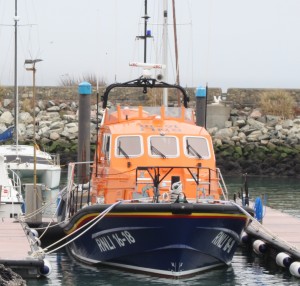 |
Saltee IslandsLooking out from Kilmore Quay, the Saltee Islands dominate the horizon. They are privately owned and these days are primarily a wildlife sanctuary. Day trips around and onto the islands are possible weather permitting. “All people young and old, are welcome to come, see and enjoy the islands, and leave them as they found them for the unborn generations to come see and enjoy.” – Michael the First Saltee Islands website |
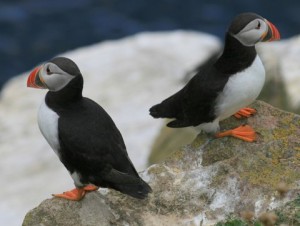 |
Stella Maris Heritage CentreThe Stella Maris Heritage Centre is an exhibit of the unique heritage of Kilmore Quay. Hosted in “The Loft” in the Stella Maris Centre on the hill heading from the harbour towards the Church, the interactive exhibit depicts the unique natural, built and cultural heritage of the area. A short video narrated by Dick Warner tells the story of the village. There is a small cover charge for adults. |
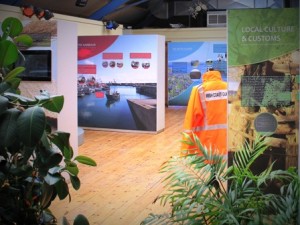 |
Thatched HousesThe main street of the village is an open-air exhibit in its own right. The quaint thatched cottages have been beautifully maintained down through the centuries. New houses have been thatched to preserve the tradition and street-scape where possible. Though style and materials have changed over the years, the thatching itself is still done by hand, the skill of the thatcher evident throughout the village. Design and markings vary and there are also some interesting artefacts from our maritime heritage to be spotted down through the village if you take the time to stroll the main street….large anchors from shipwrecks and even a Hertz Horn mine dating from World War 2 found off the Salteee Islands. |
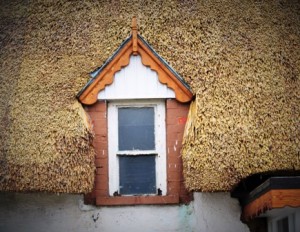 |
